Results 11,941 to 11,950 of 12089
Thread: Anandtech News
-
11-13-23, 08:37 AM #11941
Anandtech: AMD Intros Radeon Pro W7700: Rounding Out RDNA 3 For Workstations
Although AMD doesn’t have any major HPC announcements for this year’s SC23 show, the company isn’t starting this week empty-handed. For the workstation market the company is introducing its latest (and likely final) Radeon Pro W7000 series card, the Radeon Pro W7700.
Based on AMD’s latest-generation RDNA 3 architecture, the W7700 slots in between the Navi 31-based Radeon Pro W7800 and the Navi 33-based Radeon Pro W7600. As the final member of the lineup, the Navi 32-based card is designed to split the difference between AMD’s high-end and low-end Radeon Pro cards, offering a more modest level of performance for a far more modest price tag. Priced at $999, AMD is looking to hit a sweet spot in terms of hitting the high-end workstation market, edging out more expensive NVIDIA cards with a combination of higher performance and lower pricing.
Under the hood, the Radeon Pro W7700 looks a lot like a Radeon RX 7800XT that’s been dialed down to make a lighter TDP. We’re looking at a Navi 32 GCD with just 48 CUs enabled, and a more modest peak clockspeed of around 2.3GHz. The total rated throughput of the card is 28.3 TFLOPS FP32, trailing the more powerful (and more power-hungry) consumer cards a bit.AMD Radeon RX 7000 Series Specification Comparison AMD Radeon Pro W7800 AMD Radeon Pro W7700 AMD Radeon Pro W7600 AMD Radeon Pro W5700 ALUs 8960
(70 CUs)6144
(48 CUs)4096
(32 CUs)2304
(36 CUs)ROPs 128 96 64 64 Boost Clock 2.5GHz ~2.3GHz 2.43GHz 1.9GHz Peak Throughput (FP32) 45 TFLOPS 28.3 TFLOPS 19.9 TFLOPS 8.89 TFLOPS Memory Clock 18 Gbps GDDR6 18 Gbps GDDR6 18 Gbps GDDR6 14 Gbps GDDR6 Memory Bus Width 256-bit 256-bit 128-bit 256-bit VRAM 32GB 16GB 8GB 8GB ECC Yes
(DRAM)Yes
(DRAM)No No Infinity Cache 64MB 64MB 32MB N/A Total Board Power 260W 190W 130W 205W Manufacturing Process GCD: TSMC 5nm
MCD: TSMC 6nmGCD: TSMC 5nm
MCD: TSMC 6nmTSMC 6nm TSMC 7nm Architecture RDNA3 RDNA3 RDNA3 RDNA (1) GPU Navi 31 Navi 32 Navi 33 Navi 10 Launch Date Q2'2023 11/13/2023 Q3'2023 11/2019 Launch Price (MSRP) $2499 $999 $599 $799
The Radeon Pro W7700 is paired with Navi 32’s full suite of Memory Cache Dies (MCD) however, giving it a better-than-usual ratio of FLOPS to memory bandwidth. With 16GB of GDDR6 attached to a 256-bit memory bus, the card offers 576GB/second of memory bandwidth – and ECC-protected memory, at that, a feature carried over from the high-end Radeon Pro models.
As noted earlier, AMD is aiming a bit more conservatively in terms of power consumption for this card, looking to offer something between the toasty 250W+ flagship cards, and the more petite 130W W7600. The end result is that AMD has set the TBP for the W7700 at 190W, allowing for the construction of an easily-cooled dual slot card.
In terms of features, as the fifth RDNA 3 video card in AMD’s Radeon Pro lineup, the W700 is on par with its peers. Like the flagship parts, we’re looking at a fairly performant version of AMD’s RDNA 3 architecture, with the company looking to leverage various optimizations and new features throughout the card to offer better performance, and for specific tasks, new features. The core architecture includes a significant update to the CUs to improve the total number of compute FLOPS attainable, as well as optimizations to improve the kind of dense matrix math used in AI inference calculations. As well, the ray tracing units have been updated to provide better performance and a larger overall ray rate.
RDNA 3’s marquee video feature of AV1 encoding support also makes it over to the card as well. The W7700 can encode a single AV1 stream at up to 8K60, a very useful feature as AV1 adoption increases – though it doesn’t get the more powerful dual media engine found on the flagship W7800/W7900’s cards.
Meanwhile, AMD’s ace in the hole on the display output side of matters is their support for DisplayPort 2.1 connectivity, something all of NVIDIA’s cards in this generation lack. Still, Pro users intending to take advantage of DP 2.1 will want to pay close attention to the specifications for AMD’s Radeon Pro lineup, as support is not consistent throughout the cards. Whereas the cheaper W7500/W7600 only have UHBR 10 data rate support, the W7700 gets faster UHBR 13.5 support for higher resolution/color depth displays. Still, this is a step down from the W7800/W7900, which can uniquely drive a max-bandwidth UHBR 20 display.
As for the physical W7700 card itself, it is a fairly typical-for-workstations dual slot blower design. AMD is using their standard DisplayPort configuration here, equipping the card with a quartet of full-sized DisplayPorts. In terms of length, the W7700 is a bit shorter than its W7800/W7900 counterparts, though AMD hasn’t sent over the exact dimensions for the card. And while not shown in any of AMD's pictures, the card is fed additional power a single 8-pin PCIe power connector.
Wrapping things up, the Radeon Pro W7700 is getting a hard launch, and will be available today in stand-alone card form from the usual PC parts retailers at an MSRP of $999. Meanwhile, OEMs are expected to start shipping the card in their workstations beginning later this month.
Gallery: Radeon Pro W7700 Press Deck





More...
-
11-13-23, 08:37 AM #11942
Anandtech: NVIDIA at SC23: H200 Accelerator with HBM3e and Jupiter Supercomputer for
With faster and higher capacity HBM3e memory set to come online early in 2024, NVIDIA has been preparing its current-generation server GPU products to use the new memory. Back in August we saw NVIDIA’s plans to release an HBM3e-equipped version of the Grace Hopper GH200 superchip, and now for the SC23 tradeshow, NVIDIA is announcing their plans to bring to market an updated version of the stand-alone H100 accelerator with HBM3e memory, which the company will be calling the H200.
Like its Grace Hopper counterpart, the purpose of the H200 is to serve as a mid-generation upgrade to the Hx00 product line by rolling out a version of the chip with faster and higher capacity memory. Tapping the HBM3e memory that Micron and others are set to roll out n, NVIDIA will be able to offer accelerators with better real-world performance in memory bandwidth-bound workloads, but also parts that can handle even larger workloads. This stands to be especially helpful in the generative AI space – which has been driving virtually all of the demand for H100 accelerators thus far – as the largest of the large language models can max out the 8GB H100 as it is.
Meanwhile, with HBM3e memory not shipping until next year, NVIDIA has been using the gap to announce HBM3e updated parts at their leisure. Following this summer’s GH200 announcement, it was only a matter of time until NVIDIA announced a standalone version of the Hx00 accelerator with HBM3e, and this week NVIDIA is finally making that announcement.
More...
-
11-14-23, 07:08 AM #11943
Anandtech: AMD Unveils Ryzen Embedded 7000 Series: Embedded Zen 4 for Industrial And
AMD has announced the Ryzen Embedded 7000 Series processor family at Smart Production Solutions 2023, primarily targeting industrial markets such as automotive, robotics, and edge solutions. Built on the Zen 4 architecture and incorporating integrated Radeon graphics, it offers a new level of performance and functionality for the embedded market. Announced today are five new SKUs, ranging from 12C/24 down to 6C/12T, with three models with a 65 W TDP and two overclockable X-series models with a higher 105 W TDP.
Designed for industrial applications such as automotive, edge robotics, and IoT, AMD's Ryzen 7000 Embedded series finally includes integrated graphics via their Radeon RDNA™ 2 graphics, reducing the need for discrete GPUs. The Ryzen Embedded 7000 series processors also feature support for multiple operating systems, including Windows Server and Linux/Ubuntu, as well as Windows 10 and 11.
Touching on the specifications of the five new Zen 4-based Ryzen 7000 Embedded SKUs, AMD has opted to launch two overclockable X series variants, the Ryzen Embedded 7700X (8C/16T) and the Ryzen Embedded 7600X (6C/12T). These processors shouldn't be confused with their Ryzen 7000 desktop counterparts. However, the Ryzen Embedded 7700X does have 8 x Zen 4 cores, 32 MB of L3 cache, with a base frequency of 4.5 GHz and a boost frequency of up to 5.4 GHz; this puts it in a similar position to the Ryzen 7 7700X, which is virtually identical in specifications.AMD Ryzen Embedded 7000 Series (Zen 4) AnandTech Core/
ThreadBase
Freq (MHz)1T Boost
Freq (MHz)PCIe 5.0 Lanes L3
CacheiGPU
(RDNA2)TDP
(W)Ryzen Embedded 7700X 8 16 4500 5400 28 32 MB 1WGP 105 Ryzen Embedded 7600X 6 12 4700 5300 28 32 MB 1WGP 105 Ryzen Embedded 7945 12 24 3700 5400 28 64 MB 1WGP 65 Ryzen Embedded 7745 8 16 3800 5300 28 32 MB 1WGP 65 Ryzen Embedded 7645 6 12 3800 5100 28 32 MB 1WGP 65
The same can be said about the Ryzen Embedded 7600X, which is a 6C/12T part with a base frequency of 4.7 GHz, a turbo frequency of 5.3 GHz, 32 MB of L3 cache, with both X series Embedded chips coming with a 105 W TDP. Moving down the stack to the non-X series CPUs, the Ryzen Embedded 7945 has 16 x Zen 4 cores, with a larger 64 MB L3 cache, but has lower base clock speeds of 3.7 GHz, but has a 5.4 GHz turbo at just 65 W.
Coming in below the 7945 is the Ryzen Embedded 7745, an 8C/16T part with a 3.8 GHz base and 5.3 turbo frequencies, with 32 MB of L3 cache, all within a 65 W TDP. Offered as the entry-level chip to the Ryzen 7000 Embedded series is the Ryzen Embedded 7645, which has 6 x Zen 4 cores with a 3.8 GHz base frequency, with a turbo of up to 5.1 GHz.
The AMD Ryzen Embedded 7000 series processors have multiple platform options, including conventional AM5 socketed X670 and B650 motherboards. Interestingly, AMD includes support for an X600 "activator" socketed board, which provides the full 28 PCIe 5.0 lanes from the processor. The only caveat with not using PCIe lanes to connect to the chipset is that the X600 activator boards don't have a chipset and thus don't include any benefits such as I/O. Combining one of the Ryzen Embedded 7000 series processors with an X670 motherboard provides up to 24 x PCIe 5.0 lanes and 12 x PCIe 4.0 lanes for devices such as PCIe slots, M.2 storage, and other connectivity.
Unveiling the Ryzen Embedded 7000 series processors at the Smart Production Solutions 2023 event in Nuremberg, Germany, AMD's Corporate VP and GM of the Embedded Processors Group, Rajneesh Gaur, went on to say, "With the integration of key performance features and a scalable design, Ryzen Embedded 7000 Series processors are ideal for a broad range of applications from advanced robotics and instrumentation design to power control, video surveillance and more."
AMD hasn't provided retail pricing at the time of writing, which is typical for their Embedded solutions. ODM and OEMs are expected to start shipping Ryzen Embedded 7000 products imminently.
Gallery: AMD Unveils Ryzen Embedded 7000 Series: Embedded Zen 4 for Industrial And Edge Solutions





More...
-
11-14-23, 12:40 PM #11944
Anandtech: Samsung T5 EVO Portable SSD Review: QLC Sets Sane Expectations, Insane Pri
The market for portable SSDs (PSSDs) has seen rapid growth over the past decade. Samsung is one of the active tier-one flash vendors in the space, with their popular T-series PSSDs servicing a range of target markets in terms of performance and price. Today, the company is introducing a new category in PSSDs - high-capacity flash storage limited to entry-level speeds. The company is using QLC flash for this purpose. While this is not the first PSSD in the market to use QLC flash (and it will definitely not be the last), the company is not repeating the mistakes of its predecessors by promising the moon. Instead, the company's first product in this category - the T5 EVO Portable SSD - is limited to USB 3.2 Gen 1 (5 Gbps) speeds. Making up for this entry-level speed specification, Samsung is launching three different capacity points for the T5 EVO PSSD - 2 TB, 4 TB, and 8 TB. Can limiting QLC PSSDs to 5 Gbps deliver a better user experience? Read on for an analysis of the performance and value proposition of the 8 TB variant of the T5 EVO PSSD for direct-attached storage workloads.
More...
-
11-14-23, 03:00 PM #11945
Anandtech: SK hynix Ships LPDDR5T: 9600 MT/s Memory for Smartphones
SK hynix had started volume shipments of its LPDDR5T-9600 memory for high-end smartphones, the company announced this week. So far, the company's LPDDR6 'Turbo' memory with a 9600 MT/s data transfer speed has been certified to work with two range-topping mobile application processors from Qualcomm and MediaTek.
SK hynix's LPDDR5T-9600 memory is available in 16 GB packages with a VDD voltage range of 1.01V to 1.12V and a VDDQ of 0.5v. Notably, this VDD range is just slightly over the LPDDR5X specfication (1.00V to 1.1V), which shouldn't be a serious problem, but likely warrants some extra compatibility testing with existing chips.
Smartphone and SoC manufacturers have a great incentive to validate SK hynix's LPDDR5T-9600 and Micron's LPDDR5X-9600 memory as these modules offer a 76.8 GB/s peak bandwidth, up 12.5% from 68.2 GB/s offered by LPDDR5X-8533.
So far, SK Hynix's LPDDR6T-9600 modules have been certified by Qualcomm for its Snapdragon 8 Gen 3 mobile SoC as well as MediaTek for its Dimensity 9300 and some subsequent processors. Meanwhile, SK Hynix confirmed that it had begun shipments of its LPDDR6T-9600 devices to Vivo, which will use it for X100 and X100 Pro mobile application processors.
Following the latest trends, SK hynix mentions that its very fast LPDDR5T-9600 memory will be particularly useful for on-device AI applications. And, of course, faster DRAM is always welcomed for graphics intensive mobile applications, such as games.
"Smartphones are becoming essential devices for implementing on-device AI technology as the AI era kicks into full swing," said Myoungsoo Park, Vice President and Head of DRAM Marketing at SK hynix. "There is a growing demand for high-performing, high-capacity mobile DRAMs in the market. We will continue to lead the premium DRAM market based on our technological leadership in AI memories, while staying in tune with market demands."
More...
-
11-15-23, 12:27 PM #11946
Anandtech: Corsair Releases MP700 Pro SSDs: Up 12.4 GB/s With Three Cooling Options
Corsair has introduced its MP700 Pro-series solid-state drives with a PCIe 5.0 x4 interface that offer sequential read speed of up to 12.4 GB/s. The new high-end drive family offers a trio of cooling options, including active air cooling and liquid cooling. The SSDs will complement the company's MP700-series PCIe Gen5 drives and will offer a new level of performance for PC enthusiasts.
Corsair's MP700 Pro drives are based on Phison's PS5026-E26 controller as well what initial teardowns have discovered to be 232 layer Micron 3D TLC NAND memory. Compared to their earlier E26-based MP700 drive, Corsair has been able to increase the drive's maximum sequential read speed to 12.4 GB/s and maximum sequential write speed to 11.8 GB/s thanks to the use of faster NAND, which offers a higher 2000 MT/sec transfer rate (versus the original's 1600 MT/sec rate). In addition, the company increased random read speed to 1.5 million IOPS and random write speed to 1.6 million IOPS, which is comparable to speeds offered by enterprise-grade SSDs.
As far as capacity points are concerned, Corsair's MP700 Pro are currently available in 1 TB and 2 TB configurations, whereas 4 TB versions will be available sometimes in the future.
In addition to very high out-of-box performance, there is another selling point that Corsair's MP700 Pro drives have. They are available with three different cooling system to cater different PC form-factors and audiences. For high-performance laptops and compact desktops, Corsair offers MP700 Pro with a simplistic graphene heatspreader; for high-performance desktops, the company will offer these drives with an aluminum heatsink and a fan to ensure sufficient cooling and consistent performance even under high loads; whereas for owners of PCs with custom-built liquid cooling the company will offer a SSDs with a waterblock.
When the first M.2-2280 solid-state drives with a PCIe 5.0 x4 interface hit the market earlier this year, the majority of PCIe Gen5 SSDs topped out at a 10 GB/s sequential reads and writes since fast 3D NAND chips were in short supply. Now that 3D NAND with a 2000 MT/s interface is getting more widespread, Corsair and other manufacturers of SSDs are rolling out drives that can hit 12.4 GB/s read speeds.
In fact, Sabrent and some other makers are working on even faster SSDs with around 14 GB/s read speeds, so it is well possible that we are going to see a yet another 'sub-generation' PCIe Gen5 drives that will saturate a PCIe 4.0 x4 interface.
More...
-
11-16-23, 11:14 AM #11947
Anandtech: The GAMDIAS Kratos M1-750W PSU Review: For Style Over Substance
GAMDIAS, a substantial player in the realm of PC power and cooling components, has consistently garnered attention for its innovative approach to crafting gaming hardware solutions. The company emerged on the scene in 2012. Despite its relatively short history, this Taiwanese manufacturer has rapidly gained international recognition, positioning itself as one of the freshest yet promising names in the world of gaming peripherals and PC components.
In a market teeming with options, GAMDIAS has strategically honed its focus on the gaming sector, navigating the intricate balance between cost-effectiveness and ostentatious design. The company offers a wide range of PC power & cooling products, as well as peripherals and even furniture, all of which are designed to gratify a part of the gaming community.
Today, our attention is directed toward a product that targets the RGB-minded segment of the PC gaming market - the Kratos M1-750W PSU. While it may not bear the mantle of a flagship product designed for elite competition, the M1-750W PSU represents GAMDIAS' venture into the territory where aesthetics is the primary selection feature. As we delve deeper into its intricacies, we will explore how GAMDIAS tries to strike a balance between cost and visual flair, making the Kratos M1-750W a viable proposition for users who seek a stylish PSU with RGB lighting without breaking the bank.
More...
-
11-16-23, 11:14 AM #11948
Anandtech: Western Digital Releases 24TB Ultrastar & Gold Hard Drives, 28TB SMR Drive
Western Digital is announcing today that it has begun volume shipments of its 24 TB hard drives based on conventional magnetic recording (CMR) to its full customer base. In addition, the company started to ramp up production of its 28 TB HDDs featuring shingled magnetic recording (SMR) that will be used by select customers.
The new lineup of 3.5-inch 7200 RPM hard drives includes Western Digital's Ultrastar DC HC580 24 TB and WD Gold 24 TB HDDs, which are based on the company's energy-assisted perpendicular magnetic recording (ePMR) technology. Both of these drives are further enhanced with OptiNAND to improve performance by storing repeatable runout (RRO) metadata on NAND memory (instead of on disks) and improve reliability.
The company is also preparing their Ultrastar DC HC680 SMR 28 TB hard drive, which relies on shingled ePMR and OptiNAND.
When it comes to performance, the new hard drives are a tad faster than predecessors due to higher areal density. Meanwhile, per-TB power efficiency of Western Digital's 24 TB and 28 TB HDDs is around 10% - 12% higher than that of 22 TB and 26 TB drives, respectively, due to higher capacity and more or less the same power consumption. For CSPs and hyperscalers, the main value advantage of the new 24 TB drives is their higher capacity, which enables up to 612 TB of raw storage per rack using 102-bay 4U chassis.
All three models feature 10 platters and largely re-use the company's current enterprise-grade platform for multi-drive environments, which was introduced over a year ago. The platform traditionally features a top and bottom attached motor as well as RV sensors to ensure consistent performance in vibrating multi-HDD chassis. The latest Ultrastar HDDs are generally being aimed at cloud service providers, hyperscalers, and large enterprises, whereas WD Gold are going primarily to VARs, enterprises, enterprise-grade NAS, and small businesses that need to store loads of data.
Western Digital is shipping WD Gold 24 TB hard drives through their distribution channel, so expect them to hit the market shortly. The Ultrastar DC HC680 and HC580 HDDs are now in the qualification phase with select CSPs, hyperscalers, and OEMs. They are also available for enterprises that deploy these devices internally. It looks like WD is just shipping the SATA versions of these drives initially, as the company is separating noting that that the SAS versions of the Ultrastar DC HC680 and HC580 HDD will be available in the first quarter of 2024.
"With these new offerings, Western Digital is once again proving that hard drives are not just keeping pace, they are forging a path forward, ensuring that data-intensive applications of today and tomorrow have a strong foundation to build on while the industry prepares for HAMR," said Ed Burns, research director of HDD and storage technologies at IDC. "We are seeing strong momentum for Western Digital’s SMR HDDs and believe that SMR adoption will continue to grow as their new 28TB SMR HDD offers the next compelling TCO value proposition that cloud customers cannot ignore."
More...
-
11-20-23, 11:39 AM #11949
Anandtech: AMD Ryzen Threadripper 7980X & 7970X Review: Revived HEDT Brings More Core
AMD's Ryzen Threadripper 7000 processors mark the latest additions to the high-end desktop (HEDT) market, a segment AMD wants to bring back to the mainstream. Based on AMD's proven Zen 4 architecture and built on TSMC's 5nm process, both of AMD's new Ryzen Threadripper 7000 lineups – Pro and non-Pro – are designed to bring more cores and more I/O to the high-end desktop and workstation markets. Altogether, AMD is offering three new Ryzen Threadripper 7000 SKUs, the top-end 7980X with 64 cores, the mid-tier 7970X with 32 cores, and the entry-level chip in the line-up, the 24-core 7960X.
As has been the case for the vanilla Threadripper series since its inception, the purpose of AMD's server-derived processors is to meet the demands of desktop users who require extreme multitasking capabilities and high throughput for complex workloads, offering more CPU cores, more memory channels, and more PCIe lanes than what otherwise comes with AMD's desktop platform. At the same time, the basic Threadripper lineup differentiates itself from the professional workstation-focused Threadripper Pro chips – in this case, AMD's new Threadripper 7000 WX-series – by leaving out some of the more 'Pro' features that come with that hardware, as well as some of the CPU/memory/IO hardware that the even more powerful Pro chips offer. Segmenting both product lines is a good idea, given the pedigree and use cases of both the Pro WX-series and non-Pro chips are aligned with. With Threadripper 7000, AMD targets customer bases that need CPUs more powerful than a desktop Ryzen processor but not as exotic (or expensive) as what's essentially a full server-grade chip.
After taking a break in the previous generation, AMD is once again offering a HEDT-focused line-up to consumers, which is as grandiose as it is interesting. When AMD launched the Zen 3-based Threadripper 5000 series, AMD only ever released the workstation-focused Pro parts, leaving users looking for semi-affordable high-core count CPUs in the dust. This time, AMD has decided to bring the HEDT back, creating a pair of Threadripper lines similar to the Threadripper 3000 family in 2019.
Today in our AMD Ryzen Threadripper 7000 series review, we're going to be focusing on the top two chips from the trifecta, the top-end Ryzen Threadripper 7980X (64C/128T) and the middle of the road 7970X (32C/64T). We'll be comparing them to the previous Ryzen Threadripper 3000 series and directly against Intel's Sapphire Rapids Workstation CPUs, including the flagship Intel Xeon w9-3495X. Also, we'll be putting them against the desktop flagships, such as the Intel Core i9-14900K and the AMD Ryzen 9 7950X, to see how much more performance AMD's new foray into HEDT users can squeeze out. Is there a suitable place in the market for HEDT chips, given how far desktop processors have progressed within the last couple of years? Let's find out.
More...
-
11-21-23, 11:04 AM #11950
Anandtech: AMD's 96-Core Ryzen Threadripper Pro 7995WX Hits 6.0 GHz on All Cores with
AMD's top-of-the-line Ryzen Threadripper Pro 7995WX is a unique workstation-grade processor that not only offers unbeatable performance in programs that can take advantage of all of its 96-core might, but it also supports overclockability. As it turns out overclocking potential of the CPU is quite huge as it can hit 4.80 GHz on all cores with air cooling and 6.0 GHz on all cores with liquid nitrogen.
AMD's Ryzen Threadripper Pro 7995WX is a quite formidable processor that packs 96 Zen 4 cores clocked at 2.50 GHz by default (and which can push one core all the way to 5.10 GHz with decent cooling), an eight-channel DDR5 memory subsystem, and 128 usable PCIe 5.0 lanes. But AMD decided to show that the processor can do much better with advanced and extreme cooling. To do so, the company teamed up with Bill 'Sampson' Alverson, an accomplished overclocker from the U.S., who took an Asus Pro WS TRX50-Sage WiFi motherboard, four G.Skill DDR5-6400 CL32 memory (which he set to work at 3200 MT/s CL32 mode), and an Asus Thor 1.5 kW power supply.
At first, Sampson tried to overclock AMD's Ryzen Threadripper Pro 7995WX using a giant IceGiant ProSiphon Elite air cooler with four huge fans. He managed to hit 4,791 MHz in Cinebench R23 and 4,875 MHz in Cinebench R15. Then, he took a custom liquid cooling system and pushed the 96-core CPU to 4,966 MHz in Cinebench R23; 5,000 MHz in Cinebench R15; and a whopping 5,265 MHz in GPUPI 1B for CPU.
But the most interesting part is of course usage of liquid nitrogen cooling as −196°C (− 320 °F) certainly removes most of thermal constraints. The results are quite impressive: Sampson has managed to push AMD's Ryzen Threadripper Pro 7995WX all the way to 5,550 MHz with LN2 cooling, which is over 584 MHz higher compared to his result with custom liquid cooling. The CPU scored 186,756 points in Cinebench R23, up from 100,000 points for the CPU at default clocks. The processor consumed 980W at such an extreme frequency, which is up dramatically from its 350W TDP. Meanwhile Elmor and Der8auer have managed to overclock his Ryzen Threadripper Pro 7995WX to 6.0 GHz wih LN2 and scored 201,501 points in Cinebench R23.
Meanwhile, to somewhat simplify overclocking botg overlockers had to reduce the number of memory modules to two and lowered its data transfer rate to 3,000 MT/s, which somewhat reduced the value of such overclocking (after all, nobody uses this CPU with only two memory modules). Meanwhile, considering the fact that AMD wanted to achieve the maximum clock possible for its 96-core processor, playing with memory configuration is a fair thing to do.
More...
Thread Information
Users Browsing this Thread
There are currently 13 users browsing this thread. (0 members and 13 guests)




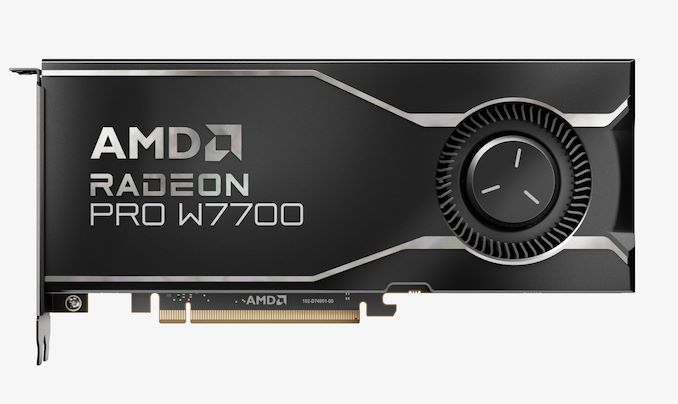

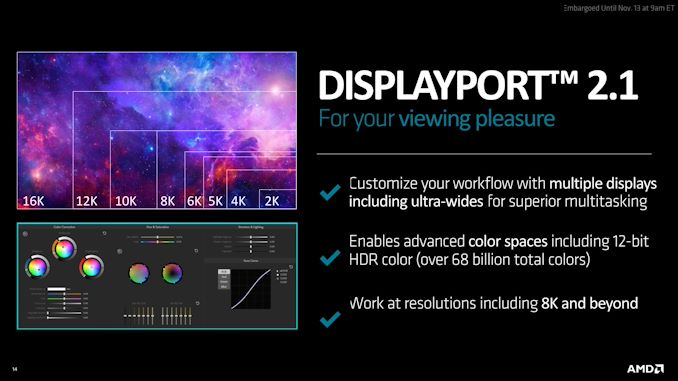
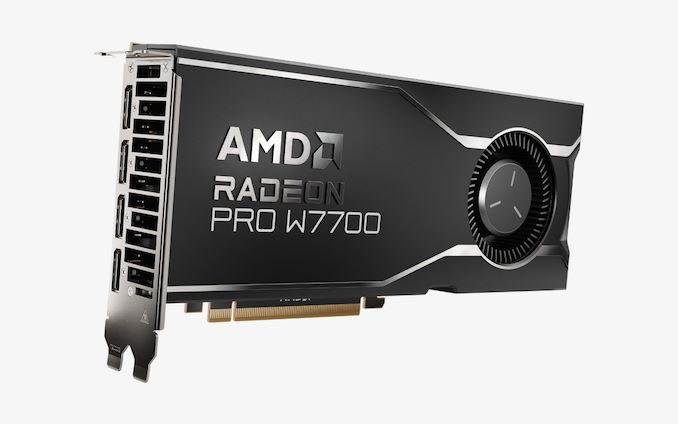


 Quote
Quote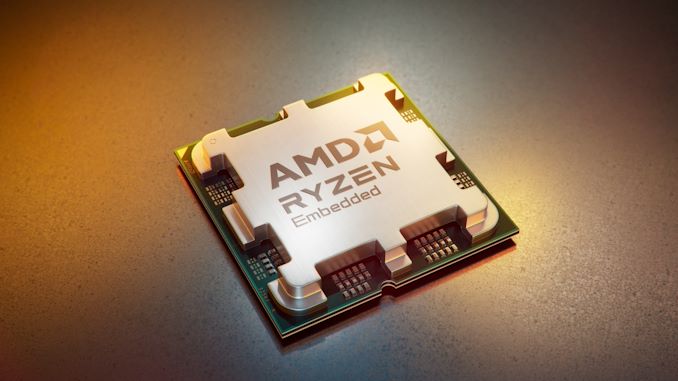
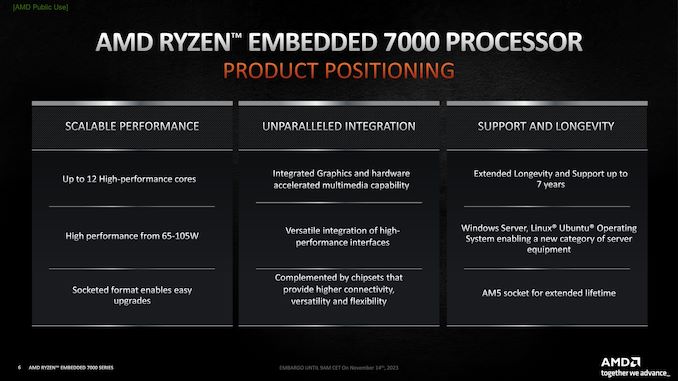

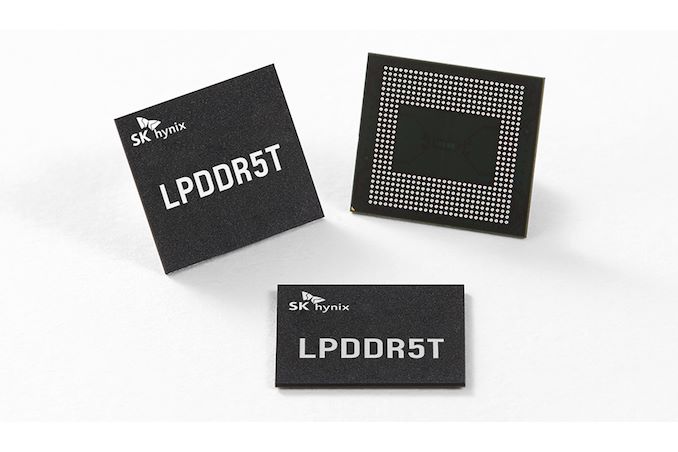
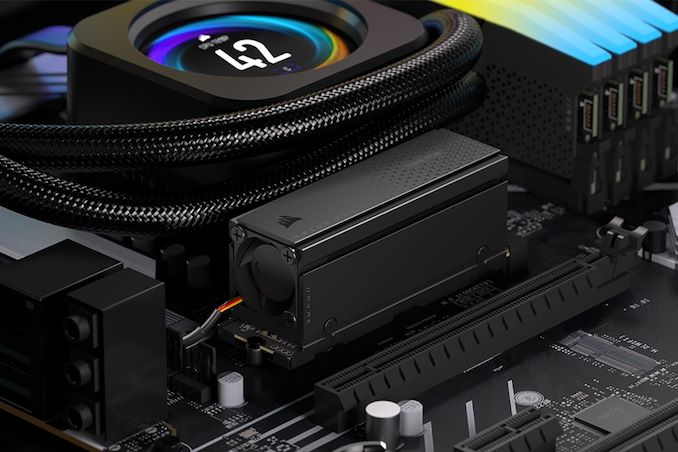
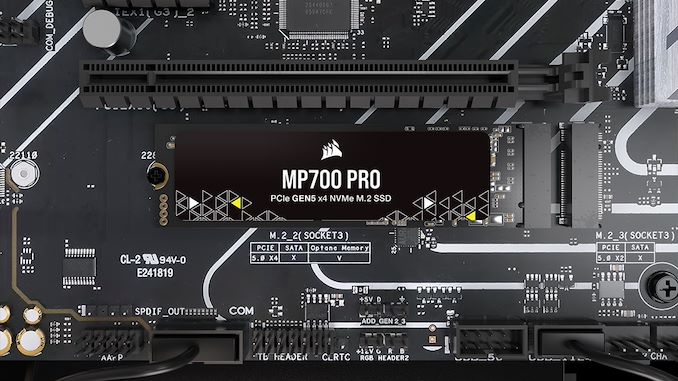
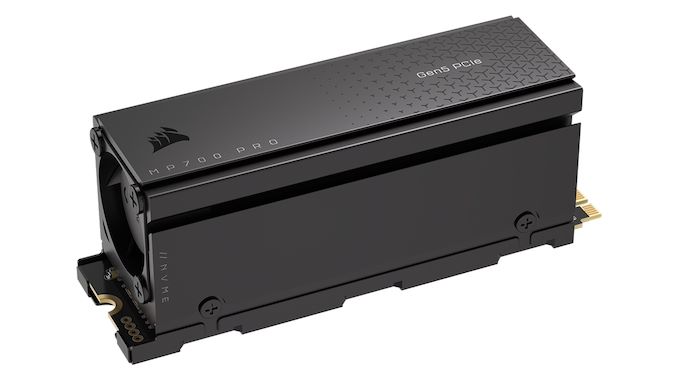
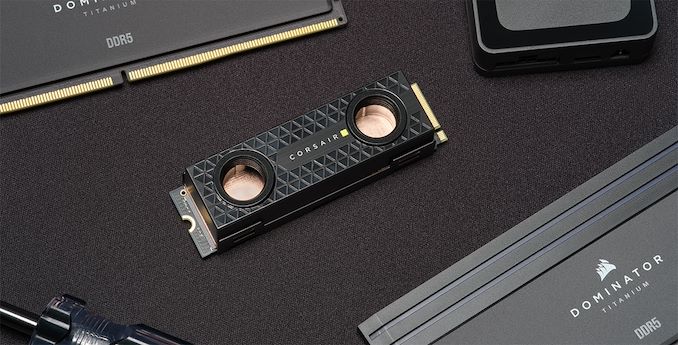
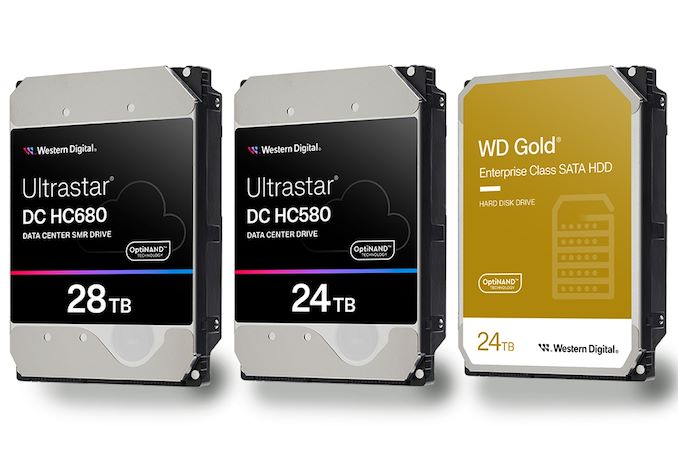
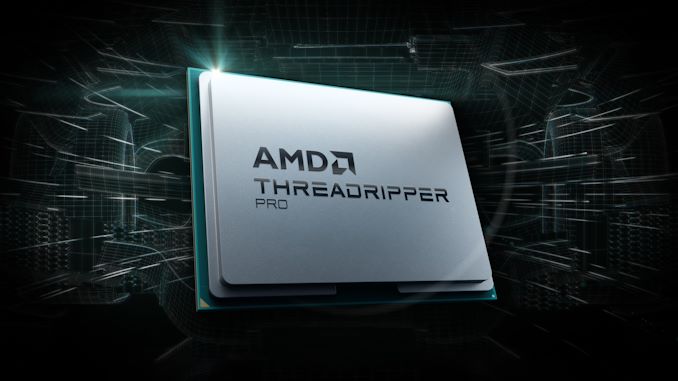

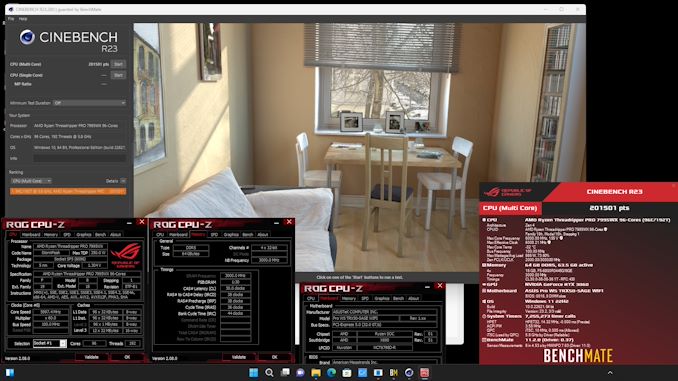
















Bookmarks